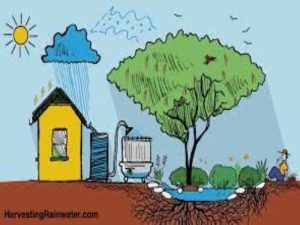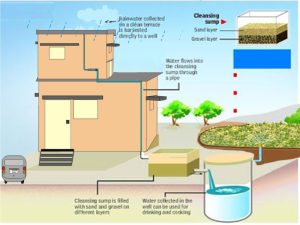Key Takeaways
-
Rainwater harvesting is a valuable part of a water management strategy, can contribute to household water security and should be encouraged and facilitated by governments.
-
Governments can create an enabling environment and policy framework that regulates and incentivizes the implementation of RWH systems.
-
Governments can promote and support RWH by raising public awareness and develop an appreciation for water resources among residents.
In an era of the COVID-19 pandemic, the Water Supply, Sanitation and Hygiene (WASH) sector is gaining much more (deserved) attention due to its importance in containing and mitigating the spread of the deadly virus. Moreover, many countries have even established constitutional mandates recognizing WASH services as a Human Right of the population after the United Nations adopted such resolution in 2010. But despite the importance and recognition of the WASH sector globally in the current era, many developing countries are still far away from reaching the Sustainable Development Goals (SDGs) for Water and Sanitation. Accelerated and sustained coverage of WASH services for all have been the source of debate over the last decade, particularly because of the difficulty of bringing these services to rural and dispersed populations in cost-effective ways and under tight fiscal constraints.
 Photo courtesy: HarvestingRainwater
Photo courtesy: HarvestingRainwater
Accelerating, sustaining and universalizing WASH must rely on multiple options that can be scaled up at reasonable costs to the government, the providers of maintenance and, ultimately, users. One of the many potential solutions that deserve attention and could help meet these ambitious objectives are rain harvesting solutions. There have been some interesting field case studies in Tanzania that illustrate how rainwater harvesting (RWH) solutions produce spill over benefits on agriculture while increasing resilience. Such effects have been observed even in dry areas in Pakistan. Also, many advocates show RWH breaks the monopolistic (and in many occasions unsustainable) structure of the usual utility service providers. The debate of whether RWH is a viable option within the menu of solutions available to accelerate, sustain (both environmentally and economically) and universalize access to safe water is still open. Because of that reason, this short literature review can provide a clearer “picture” of the features and characteristics of these options.
RWH is useful for the accumulation and deposition of rainwater in specially prepared collection and catchment areas, such as roofs, or areas on the ground, and has numerous (unquantified) benefits. In water-rich countries like Malaysia or Colombia, for instance, RWH has proven useful in improving water security at household and personal scales, and with financial viability. Rainwater can act as a buffer against shortfall, as an alternative primary source in rural areas that lack conventional water supply systems, and as a backup supply source in urban areas. A cost-benefit analysis of RWH options pointed out that these options are not economically viable, but without quantifying the multi-purpose benefits of RWH. For instance, RWH systems can mitigate service interruptions from centralized water distribution systems, or overuse of water from wells in arid regions. RWH can also be used to store rainwater for emergencies such as earthquakes, and as an adaptation strategy to cope with climate extremes such as droughts. In addition, RWH can help reduce the impacts of flooding through the reallocation of water in small watersheds dedicated for agro-forestry and reduced urban runoff.
If well managed, rainwater quality can be safe in combination with a framework of international standards. Rainwater is considered an ‘improved water source,’ according to the WHO & UNICEF Joint Monitoring Programme (WHO & UNICEF, 2019), when these parameters and standards are met. Therefore, investments in up scaling RWH count towards meeting the targets agreed by national governments for WASH as part of the SDG 6.
Neerain is proud to republish this blog for spreading awareness about situation of water, for our stake holders. Credit whatsoever goes to the Author.
This blog is published by: –
Author: Christian Borja-Vega
Publish On: November 10, 2020

